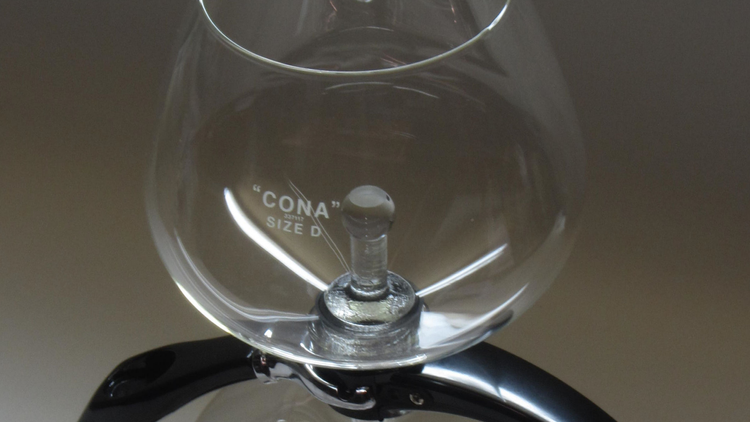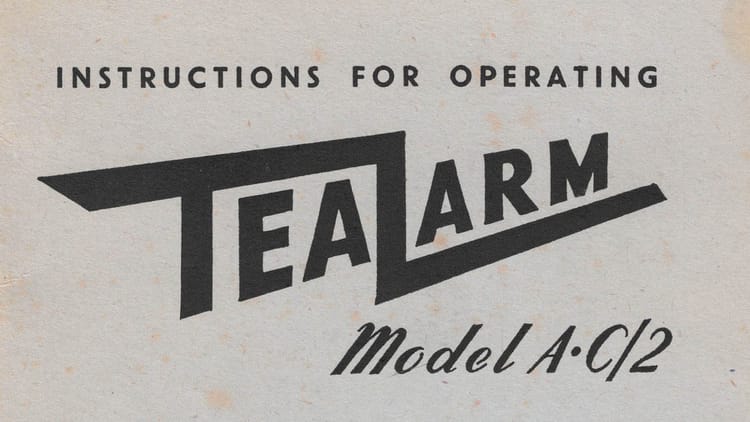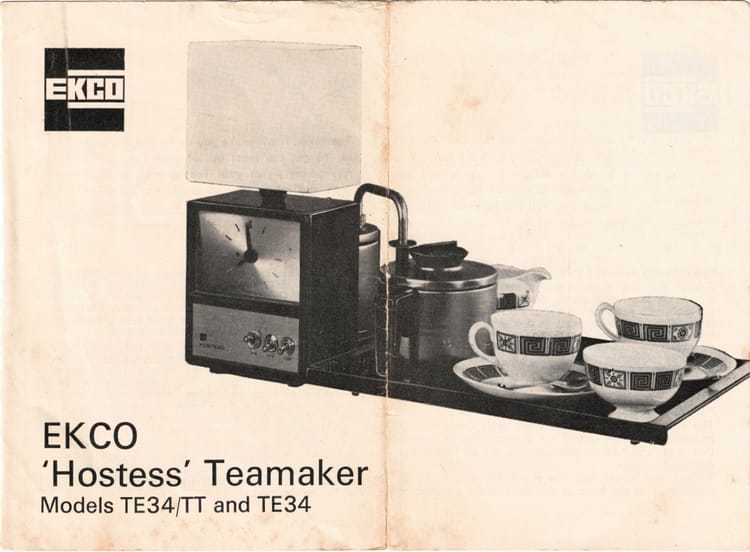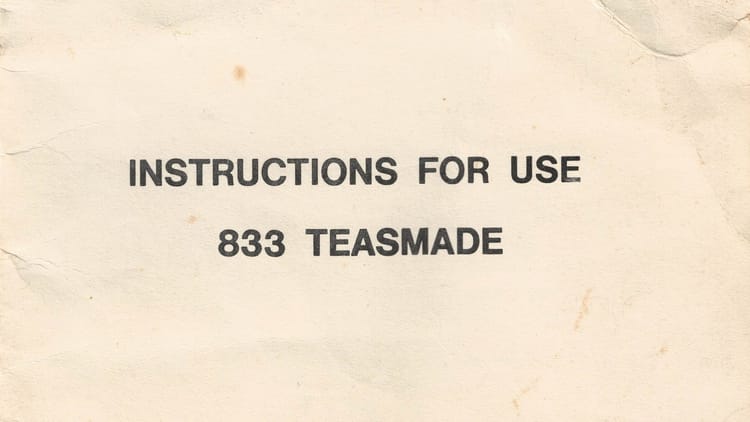Caring for a Vintage Teasmade

These tips on caring for your vintage Goblin Teasmade are provided by our enthusuiastic teasmaniac, Doug.
The Goblin Teasmade was designed and made in an era when things were built to last. Hence it is not unusual to find these appliances lasting for 15 to 20 years or more without attention. However, a little TLC can double or treble the teasmade’s active life. Here’s how.
Location
Few people actually have a teasmade on the bedside unit. Mostly they are on a table in the bedroom. Wherever it is, it should be as far away from a radiator as possible. (See Clock Motor).
Cleaning
The body is formed of urea, a derivative of Bakelite. It responds well to cleaning with metal polish, either ‘Brasso’ or ‘Carr and Day and Martin’ (best). Being mildly abrasive it is good for removing tea stains and can be used on the chrome kettle as well. After cleaning, a light spray with a wax polish like ‘Pledge’ will give a nice sheen.
A reader has suggested descaling the kettle with white vinegar. Just boil a little vinegar diluted about equal volume with water. This has the big advantage of being cheap, cheerful and non-toxic. To clean the pot, try soaking it in a solution of denture cleaner. This works well and again is non toxic.
Lights and Light Bulbs
The lights on either side are well vented but this allows dust and fluff in. Occasionally remove the covers and clean.
All Goblin Teasmades where 2 bulbs are fitted either side of the centre unit use 15w SBC (Standard Bayonet Cap) pygmy bulbs. This also goes for the 860 & 870. These bulbs are only readily available in clear, which gives a harsh glare. Fitting 15w candle lamps in opal gives a softer glow.
Where a single bulb is fitted horizontally above the unit – D31, D32, 833, 843, 844, 853, 854 etc then a 40w candle pearl BC, (Small Bayonet Cap) is fitted. Do not buy BC ‘miniature’ bulbs: these are for torches.
The D28 series uses an ordinary SBC (Standard Bayonet Cap) bulb to support the lampshade. It can be 15w 25w or 40watt.
It is important to stress that the filament wattage must not be exceeded as the plastic covers will warp and discolour with the heat. I have seen many at car boot sales in a sorry state as a result.
Teapot
Treat with care. These are obsolete and difficult to obtain. Wash out soon after use. Occasionally fill with a mild bleach solution and leave overnight. Rinse twice with boiling water.
Kettle
The elements are now obsolete so need looking after. Goblin have ensured they can never boil dry so they have a long life. Regular descaling with a product such as ‘Descalite’ will mean the water boils quicker and the element is used less. Fill with water from the hot tap: much limescale has already been deposited in your hot water tank.
Filling with Water
Rather than taking the kettle to the water, bring the water to the kettle. Get a 1 litre plastic jug and fill to the ¾ level. This will fill the kettle to the full marker, allowing for the water left in the bottom. If you need less, pour two or three cups of water into the jug and mark the level. This is where you fill it to every day. Easier than unplugging the kettle and the contacts will never wear.
Alarm Setting
Goblin allowed 10/12 minutes for a full kettle to boil but this can vary. Using the jug method, fill the kettle with cold water to your required level, ensuring there is residual water in the bottom. Set the time to 12.00 and bring the alarm indicator round until it ‘clicks in’ and switch on. Note the exact time the alarm sounds – say 12.11. Unplug & set time to 11 mins. before the time you wish it to go off every day. Now bring the alarm indicator round slowly until it ‘clicks in’. Leave the alarm indicator there, set clock to correct time and plug in. Now your alarm will always sound at the right time.
A note on working on electrical appliances
If you are working on any electrical appliances you need a meter and know how to use it. They are available quite cheaply from companies such as Maplins.
Leads and Sockets
One Achilles heel of the teasmade is the kettle lead/socket. Constant plugging and unplugging makes the contacts spread which causes poor connection, arcing, pitting and failure. If the socket is loose when plugged to the kettle, you need to take action now. Unplug the unit from the mains. Dismantle the socket and clean the inside of the contacts with rolled fine glasspaper until shiny. Now get a screwdriver a little smaller than the kettle pins, insert it into the contacts and squeeze them together until they are a good fit around the screwdriver. Reassemble the socket. Take the glasspaper and roll it around the screwdriver coarse side in. Now slip this roll over the kettle pins and gently abrade them. Wipe them clean and smear them with a little Vaseline. The socket should now slide over the pins easily, yet will be a firm fit. To avoid repetition, see next tip.
Switches
Many switches on older Teasmades are of the self-wiping type. Each time the switch is reversed, the action has a self-cleaning effect on the contacts. My own D25b was erratic in operation, but testing the main switch (DPSTx2) with a digital meter indicated dirty contacts. Introducing a few drops of ‘switch cleaner’ into the top of the switch and vigorously reversing the toggle about 12 times worked wonders and the reading after was a perfect 0.000 – dead short. Simply doing the switch action will have a beneficial effect. If the Teasmade is to be out of use for some time, it is best to leave the switches on ‘auto’ with alarm contacts closed to reduce oxidisation forming.
Finally…
Finally, use your Teasmade regularly and establish a routine of ‘setting up’ at bedtime. Skimmed milk is best as it has no cream content and won’t go off in summer. Put the milk in the cups or jug and don’t forget the teabag! Use these tips and your trusty Teasmade will deliver an early morning ‘cuppa’ for years to come.
Doug






Member discussion